Economic Equality Caucus
which advocates for economic equality across the USA.
| Home | Organizational Structure | State Coordinators | Executive Director | Caucus Articles | Memberships | |||||
| "Delta Vision, Delta Voices" | ||||||||||
|
Help Advocate for Economic Progress and Equality. Donate to the Delta Caucus/Economic Equality Caucus. |
||||||||||
Delta Grassroots Caucus Events

Credit Michael Hibblen/ KUAR News, Arkansas Public Radio; Former President Bill Clinton speaking to the Delta Grassroots Caucus on May 2, 2013, at the University of Arkansas Clinton School of Public Service, Little Rock
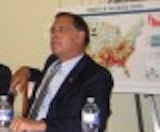
U. S. Senator John Boozman, Arkansas, at a Delta Grassroots Caucus meeting at the US Capitol
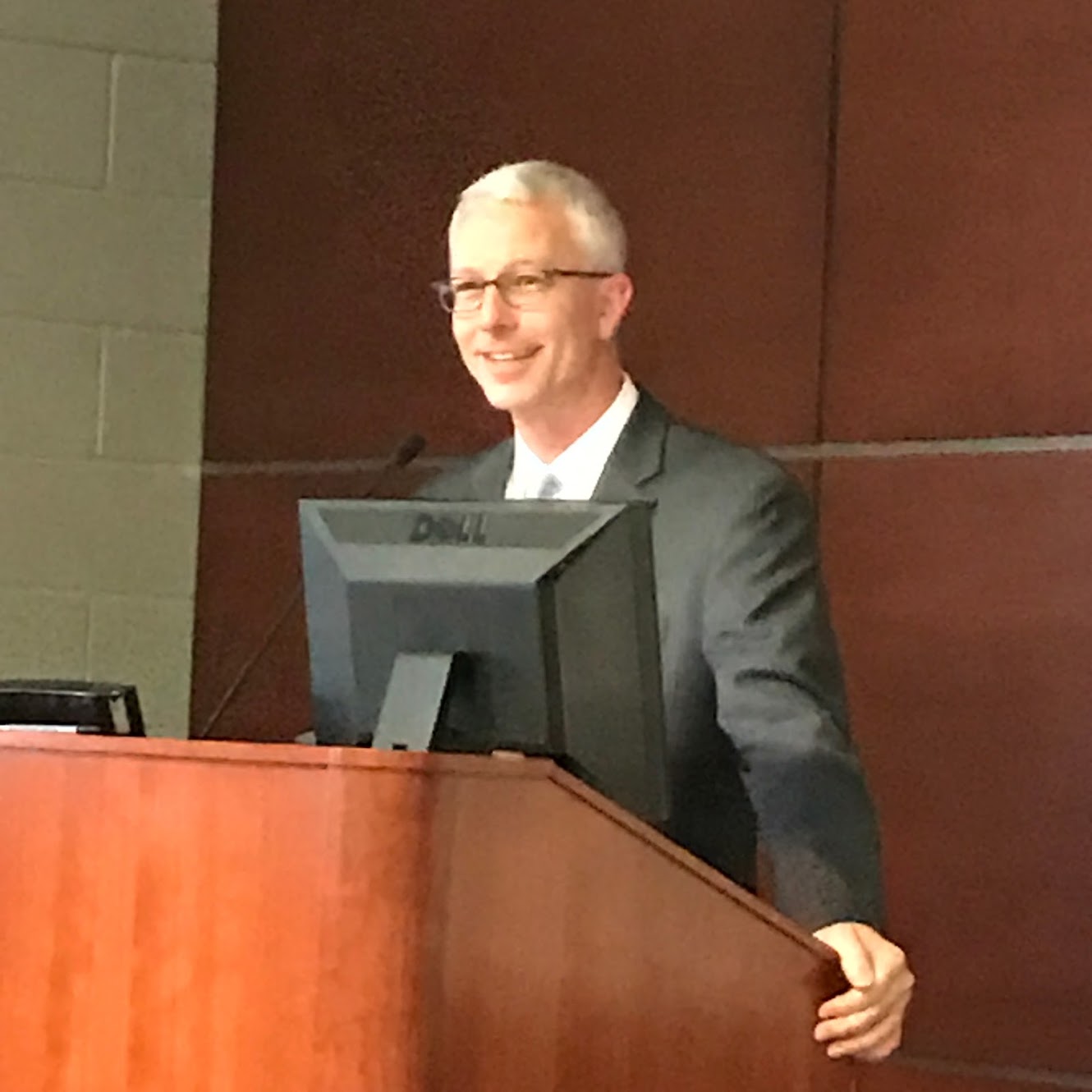
Brad Cole, Executive Director of the Municipal League of Illinois; previously a senior aide to former Republican US Sen. Mark Kirk of Illinois, earlier Mayor of Carbondale, Illinois, veteran Delta regional advocate, speaking at the Delta regional conference in West Memphis, Arkansas on April 26, 2019.

President Bill Clinton makes a comment to Delta Caucus Director Lee Powell at a meeting in Blytheville, Arkansas (in the northeast Arkansas Delta) on Nov. 2, 2014

The Delta Caucus would like to pay tribute to the late, great U.S. Sen. Thad Cochran of Mississippi, a powerful force in the US Senate for decades and a champion for the Delta. Sen. Cochran passed away on May 30, 2019. He spoke to the Delta Caucus on many occasions over the years (he is pictured above speaking to a Caucus event on Capitol Hill in Washington, DC) and his thoughtful, courteous and bipartisan leadership will be sorely missed.
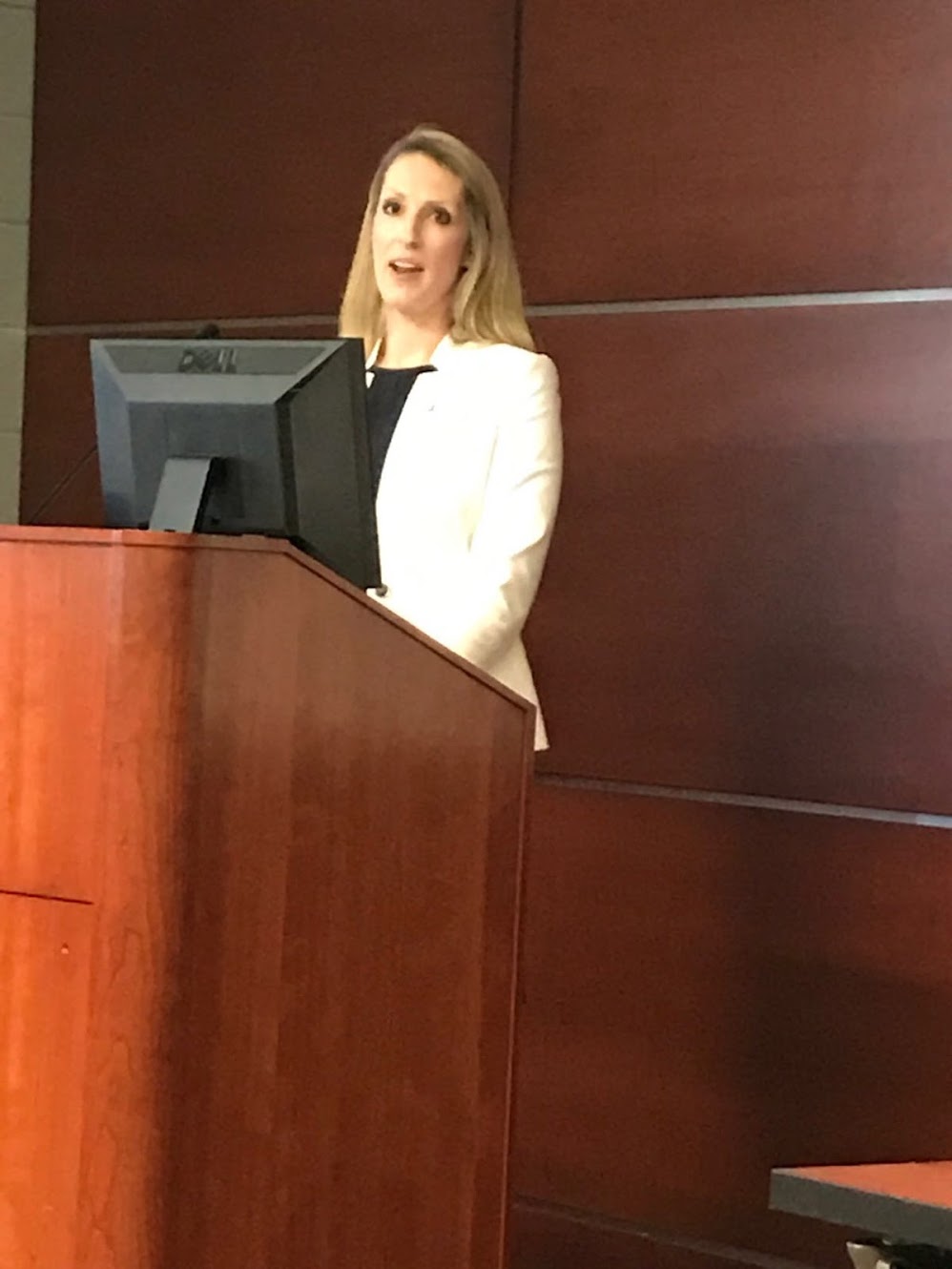
Marcie Lawson, Executive Director, Sikeston, Missouri Regional Chamber and Area Economic Development Corporation, speaking at the Delta regional conference in West Memphis, Arkansas on April 26, 2019.
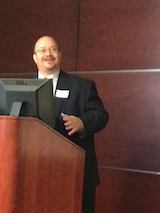
Alan Gumbel, Greater Memphis Alliance for a Competitive Workforce, Memphis, Tennessee, speaking at the Delta regional conference in West Memphis, Arkansas on April 26, 2019.
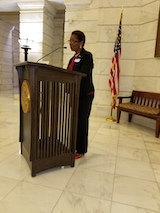
Mayor Shirley Washington of Pine Bluff, AR, speaking to the Delta Caucus at the Arkansas Capitol Rotunda in 2017.
May 2-3 Delta Event: Funding for Best Practices, & Commemorating Delta Initiative
Posted on January 15, 2013 at 04:23 PM
The Delta conference now planned for May 2-3, 2013 at the Clinton Center will commemorate the 20th anniversary of the Clinton administration’s bipartisan Delta regional initiative. We will announce a package of “best practices” funding contributions to nonprofits for constructive economic development projects, and continue advocacy for compromise in Washington, DC to avoid default and another recession.
We should emphasize that President Clinton’s Delta regional initiative was always bipartisan, and enjoyed strong support from Democrats and Republicans such as Sen. Thad Cochran (MS), Rep. Jo Ann Emerson (M)), Sen. Richard Shelby (AL), just as today we have strong support from Sen. John Boozman (AR), Senators Cochran and Shelby, and many other Republicans across the region.
President Clinton’s Foundation, Library, School of Public Service and other organizations have continued to support the region’s progress after his Presidency, and some of the accomplishments and remaining challenges will be highlighted below in this message.
We will invite President Clinton, Members of Congress, regional, state and grassroots leaders from the eight-state region, as well as business leaders and nonprofit organizations.
At the present time, there are differing viewpoints on how the current funding debate in Washington, DC will turn out: some believe we will continue the pattern of gridlock, leading to a severely damaging default and another recession. Other analysts believe we will have an imperfect compromise with increased revenue and spending cuts in foreign military interventions, the most expensive weapons systems, as well as substantial cuts in domestic spending.
WE URGE A COMPROMISE SOLUTION TO OUR PARTNERS IN CONGRESS AND THE OBAMA ADMINISTRATION: The second of these options–a compromise where both parties make concessions–will itself cause pain in our current budgetary and economic situation, but the Delta Caucus partners see a compromise as vastly preferable to a default.
While we would ask Congress and the Obama administration to not focus the cuts too heavily on the neediest of the needy in Medicare and Medicaid, USDA rural development and nutrition programs, and job creation, we also understand that we will all have to disagree with parts while agreeing with other parts of a fundamental compromise.
The Delta is already suffering economically, and a default and another recession would devastate all that we have worked for so many years.
VITAL IMPORTANCE OF PRIVATE SECTOR: The private sector activities have always been vital, but even moreso today if the gridlock with the federal government continues. We have many corporations and private nonprofit organizations who do excellent work in the region and we want to recognize their vital work both in charitable donation and their business activities in job creation, renewable energy and energy efficiency, nutrition (including child nutrition), health care for underserved populations, and education.
The Delta Caucus has always worked intensively with grassroots organizations and the many smaller businesses and nonprofits in the region, and in recent years we have increasingly developed constructive collaboration with corporations such as Nucor Yamato Steel and Nucor Steel of Arkansas, Siemens, Inc., Fed Ex Express, Wal-Mart, FutureFuel, and we want to encourage partnerships among the larger and smaller organizations in the region.
REGISTRATION: You register by sending in the $100 registration fees and the $25 annual membership dues. The dues are paid only once in a year and we are collecting them along with registration fees because many people never paid them when we tried to receive them separately. Space will be limited.
Please make out the $125 check (for registration and annual dues) to “Delta Caucus” and mail to our office in the Washington, DC area:
Delta Caucus
5030 Purslane Place
Waldorf, MD 20601
SCHEDULE:
Thursday evening, May 2, 2013, 4:30 p.m. to 8 p.m., Clinton School of Public Service
Friday, May 3, 2013, 8:30 a.m. to 3:30 p.m., Clinton Library Great Hall
TABLE OF CONTENTS:
I. QUICK SUMMARY OF DATA ON DELTA’S RECENT ECONOMIC HISTORY
II. President Clinton’s 2000 State of the Union Address–Excerpts on the New Markets Initiative, including the Mississippi Delta
III. Chronology of the Clinton Administration’s Delta Regional Initiative
I. QUICK SUMMARY OF DATA ON DELTA’S RECENT ECONOMIC HISTORY
The purpose of commemorating the Clinton administration’s Delta Regional Initiative is to take stock of what policies have worked in the past and what remaining challenges face us today and in the future. We also want to give credit where it is due, not just to President Clinton and his administration but to all the allies from both parties in Congress, the states, the grassroots level, the business sector and the private nonprofit sector.
Here are some facts and figures about the recent economic history of the Delta–this is just a quick overview and we will be providing more detailed data later:
–The poverty rate across the Delta region improved from 18.4 percent at the beginning of President Clinton’s second term to 16.6 percent in 2000. Historically, Delta poverty rates have been intractable or have declined, so this decrease by approximately 10 percent in that period ran counter to the historical trend.
–By 2008, the Delta’s regional poverty rate was 19.8 percent, which was 3.2 percent worse than it had been at the end of the Clinton administration. The recession, of course, harmed the Delta region even further, as it did the national economy.
–The poverty rate in the entire Delta region when President Clinton took office in 1993 was 7.5 percent, and this declined to 4.2 percent by the beginning of 2000.
–President Clinton directed all federal departments and agencies with domestic policy jurisdiction to join in the Delta Regional Initiative to support efforts at promoting the region’s economic development, leading to extensive listening sessions in the region and a major conference attended by 700 leaders in Washington, DC in May, 2000;
–President Clinton supported a targeted package of funding for the Mississippi Delta region in 2000 of $159 millon for USDA Rural Development, rural small business and housing, HHS funding for improvements in rural heath services, job training for dislocated workers, improvements in roads (including I-69), bridges, and other infrastructure,
–President Clinton directed all federal agencies to contribute data and ideas on what policies were needed to further aid the Delta’s growth in a major administration report published at the Washington, DC Conference on the Delta in 2000, Delta Vision, Delta Voices: The Mississippi Delta Beyond 2000 (still available on the Delta Caucus website at www.mdgc.us).
–The Delta Caucus is a direct outgrowth of the Clinton administration Delta Regional Initiative, which included crucial participation from grassroots leaders, and the Delta Caucus enjoys strong support today in its economic development activities by mayors and other elected local officials, nonprofits, small business leaders, corporations, foundations, universities and colleges and other institutions in all eight states and the Washington, DC area.
–The Clinton School of Public Service consistently does service projects in the region, attracts renowned speakers on subjects of great importance for the region at the school, and in other ways continues to be involved in promoting the region’s development.
–The Delta Regional Authority was signed into law by President Clinton with the support of a bipartisan regional coalition in December, 2000, with an original budget of $30 million.
–The targeted program of funding supported by President Clinton in 2000 was not supported in President George W. Bush’s administration;
–DRA budget was sharply cut by President George W. Bush’s administration down to $4 million by 2003-2004, and President Bush proposed further cuts to only $2 million.
National, regional, state and grassroots leaders staunchly opposed these cuts and organized a long-term campaign for restoring the budget, which today has expanded from the low point in the early Bush administration to today, when the DRA receives about $12 million through the energy and water bill and another roughly $3 million through USDA Rural Development.  DRA summary–We will give a quick summary of many of the DRA’s accomplishments, but we must emphasize that the DRA is only one relatively small agency and the Delta regional movement must be a broad-based effort to support all federal, state, and local governmental efforts as well as the vital private sector.
We sometimes hear people say that they thought the entire Delta regional movement was just the DRA and nothing else–this is completely erroneous and is putting too much of a burden on one small, under-funded agency. Having said that, let’s look at their accomplishments in spite of the small funding:
As always, we reiterate that the Delta Caucus and the DRA are separate organizations and the DRA takes no responsibility whatsoever for anything we say.
The $15 million DRA budget is a supplement to all the other activities in the region, and the DRA’s role in strategic planning, the Delta Doctors Program, and the unifying impact of the agency must also be considered in assessing its achievements.
WHY DO THE MOST IMPOVERISHED REGIONS LIKE THE DELTA AND APPALACHIA NEED SPECIAL EFFORTS TO PROMOTE THEIR ECONOMIC DEVELOPMENT?
Let us summarize some of that information below:
The 252 counties and parishes served by the DRA constitute the most distressed area of the country. As the DRA rightly states, “The disparities between the Delta region and the nation as a whole are stark. As defined by the Economic Development Administration, virtually all the counties and parishes in the region are distressed.”
-Life expectancy for men and women in the Delta region, is years behind the national average.
-According to the Bureau of Labor Statistics, when unemployment soared across the nation in November 2010, the number of unemployed in rural counties was twice that of the national average.
-250 out of the 252 counties and parishes in the DRA area have per capita income levels at or below the national average.
-The poverty rate in the region is 55 percent higher than the national rate
-Compared with the national rates, deaths in the Delta from circulatory diseases are 21.2 percent higher, deaths from cancer are 12.7 percent higher and deaths from accidents are 42 percent higher.
-Bipartisan support led to creation of the DRA: Reflecting on such alarming data, in 2000 President Bill Clinton signed into law the legislation creating the DRA, with the support of a strong bipartisan consensus in Congress. We do not need any further reports or study groups to tell us how poor we are. People in our region are fed up with more study commissions. We need more action in many ways and the DRA is one institution, along with other new organizations and sustainable policies, that is providing action for change.
Since its establishment a little over a decade ago, the DRA has accomplished a lot with its relatively small budget. To cite a few of the major results:
-Targeted investments in the eight states created over 6,000 jobs and retained approximately another 6,000 jobs.
-The DRA has a remarkable leverage ratio of 23:1, leveraging $1.4 billion in private investment with DRA projects and helping 17,000 families gain access to clean water and sewer service.
-The DRA has provided a broad range of strategic plans to assist partners in information technology, small business and entrepreneurialism, health care, transportation and other key initiatives.
-The Delta Doctors program has placed over 150 doctors in underserved areas in the Delta without additional costs to taxpayers.
-There are other broad-based benefits from the DRA, which at a fundamental level promotes unity, direction and hope for the region.
II. PASSAGE FROM PRESIDENT CLINTON’S 2000 STATE OF THE UNION ADDRESS REGARDING THE NEW MARKETS INITIATIVE, THE DELTA, AND RELATED ISSUES
“Now, to keep our historic economic expansion going, I believe we need a 21st century revolution to open new markets, start new businesses, hire new workers right here in America-in our inner cities, poor rural areas, and Native American reservations. Our nation’s prosperity hasn’t yet reached these places.
Over the last six months, I’ve traveled to a lot of them, joined by many of you, and many far-sighted business people, to shine a spotlight on the enormous potential in communities from Appalachia to the Mississippi Delta, from Watts to the Pine Ridge Reservation. Everywhere I go, I meet talented people eager for opportunity, and able to work. Tonight I ask you, let’s put them to work. For business, it’s the smart thing to do. For America, it’s the right thing to do. And let me ask you something-if we don’t do this now, when in the wide world will we ever get around to it?
So I ask Congress to give businesses the same incentives to invest in America’s new markets they now have to invest in markets overseas. Tonight, I propose a large New Markets tax credit and other incentives to spur $22 billion in private-sector capital to create new businesses and new investments in our inner cities and rural areas. Because empowerment zones have been creating these opportunities for five years now, I also ask you to increase incentives to invest in them and to create more of them. And let me say to all of you again what I have tried to say at every turn-this is not a Democratic or a Republican issue. Giving people a chance to live their dreams is an American issue.
Mr. Speaker, it was a powerful moment last November when you joined Reverend Jesse Jackson and me in your home State of Illinois, and committed to working toward our common goal, by combining the best ideas from both sides of the aisle. I want to thank you again, and to tell you, Mr. Speaker, I look forward to working with you. This is a worthy, joint endeavor. Thank you.
I also ask you to make special efforts to address the areas of our nation with the highest rates of poverty-our Native American reservations and the Mississippi Delta. My budget includes a $110-million initiative (NOTE: the amount was later increased to more than $159 million) to promote economic development in the Delta, and a billion dollars to increase economic opportunity, health care, education and law enforcement for our Native American communities. In this new century-we should begin this new century by honoring our historic responsibility to empower the first Americans. And I want to thank tonight the leaders and the members from both parties who’ve expressed to me an interest in working with us on these efforts. They are profoundly important.
There’s another part of our American community in trouble tonight-our family farmers. When I signed the Farm Bill in 1996, I said there was great danger it would work well in good times, but not in bad. Well, droughts, floods, and historically low prices have made these times very bad for the farmers.
We must work together to strengthen the farm safety net, invest in land conservation, and create some new markets for them by expanding our programs for bio-based fuels and products. Please, they need help-let’s do it together.
Opportunity for all requires something else today-having access to a computer and knowing how to use it. That means we must close the digital divide between those who’ve got the tools and those who don’t.”
III. CHRONOLOGY OF EVENTS–Clinton Administration Delta Regional Initiative
Delta regional activities in the few years before the Clinton administration:
1987: The Lower Mississippi Delta Development Commission was envisioned by former Senator Dale Bumpers (AR) and former Congressman Mike Espy (MS), who drafted the legislation authorizing the Lower Mississippi Delta Development Commission (commonly called The Delta Commission). Many other senior Members of Congress (Rep. Bill Alexander (AR), Sen. Thad Cochran (MS), Rep. Jo Ann Emerson (MO), join in support of this effort.
1988: Congress enacted Public Law 100460, establishing the Lower Mississippi Delta Development Commission, to assess the needs, obstacles, and goals of the people living in the Lower Mississippi Delta region. The region includes 219 counties and parishes within the states of Arkansas, Illinois, Kentucky, Louisiana, Mississippi, Missouri, and Tennessee. The Delta Commission was chaired by then-Arkansas Governor William Jefferson Clinton, and was headquartered in Memphis, Tennessee.
1989: The Delta Commission studied, and made recommendations on the economic needs, problems, and opportunities of the Region, developing a 10-year economic development plan for the Delta. The first Report of The Delta Commission, Body of the Nation: The Interim Report of the Lower Mississippi Delta Development Commission, was released.
1990: The final Report was prepared and submitted to President Bush and the 101st Congress by The Delta Commission, entitled The Delta Initiatives: Realizing the Dream…Fulfilling the Potential.
CLINTON ADMINISTRATION DELTA INITIATIVE
1993-4: In the Clinton-Gore Administration’s Empowerment Zone/Enterprise Community program (EZ/EC), approximately one fourth of the rural EZs and ECs in the entire national program were located in the Delta-seven ECs as well as the Mississippi Delta Empowerment Zone Alliance (MDEZA).
1994: The Congress enacted Public Law 103-433, directing the Secretary of the Interior Bruce Babbitt to undertake a comprehensive program of studies on the heritage of the Lower Mississippi Delta to identify resources and recommend methods to preserve and interpret the natural, cultural, and recreational resources of this region with economic development through enhanced tourism as the primary goal.
1994: On his extensive “border-to-border” tour, then Federal Highway Administrator Rodney Slater traveled through much of the Delta, and discussed with State officials the potential and timing for updating the 1990 Report.
1995: The Federal Highway Administration released Linking The Delta region With The Nation and The World, which updated progress in improving transportation and employment in the Lower Mississippi Delta region.
1996: The U.S. Departments of Agriculture and Interior (National Biological Survey), the U.S. Fish and Wildlife Service, the U.S. Geological Survey, and the U.S. Environmental Protection Agency (USGS) cosponsored a Delta technical conference on agricultural/environmental issues, opportunities, and technology transfer.
1996: In its guidance on the 1996 Farm Bill, the U.S. Department of Agriculture committed to pursuing special initiatives, based upon partnerships and collaborations, to address the persistent poverty found in the Mississippi Delta. USDA, in collaboration with the Housing Assistance Council, began an initiative to pull together existing expertise to create a comprehensive community development strategy for the Delta.
1997: President Bill Clinton proposed in his FY1998 budget to commit $26 million to revitalization efforts in the Delta region and proposes a Delta regional Commission.
1998: President Bill Clinton requested that Congress renew the Federal government’s commitment to the region by creating the Delta region Economic Development initiative.
1998: U.S. Congressmen Harold Ford, Jr. (TN) and Marion Berry (AR) joined forces to gain congressional approval of the $26 million plan by President Clinton to promote economic revitalization of the Lower Mississippi Delta region. Ford and Berry responded to the President’s call by seeking full funding for the initiative. Twelve members of Congress-including Democratic Minority Leader Richard Gephardt-who represent congressional districts in the Lower Mississippi Delta region joined Ford and Berry in a letter to the House Appropriations Committee to gain approval of the initiative. Congress did not pass the plan.
1998: Vice President Al Gore announced a major initiative to combat the Delta’s chronic poverty. The new initiative-the Delta regional Initiative-is a combined effort of the Southern Empowerment Zone and Enterprise Community Forum and the Lower Mississippi Delta Development Center. Vice President Gore, U.S. Agriculture Secretary Dan Glickman, U.S. Transportation Secretary Rodney Slater, and U.S. Housing and Urban Development Secretary Andrew Cuomo were signatories to this Memorandum of Understanding with the community development organizations.
1998: U. S. Transportation Secretary Rodney E. Slater convened “The Delta Beyond 2000” Conference in Memphis, Tennessee, where the Department of Transportation was joined by nine other Federal agencies, as well as a number of State and local leaders to discuss economic development challenges and other issues pertaining to the region. The Federal partners signed a Memorandum of Understanding, and agreed to assess Federal accomplishments toward fulfilling the goals and recommendations of the 1990 Delta Commission Report.
In addition to Transportation, the initial nine Federal agencies included: Agriculture, Commerce, Housing and Urban Development, Health and Human Services, Labor, Education, Interior, Small Business Administration, and the Environmental Protection Agency. In 1999, the MOU was expanded to include the Departments of Defense, Justice, Treasury, Veterans Affairs, Energy and the National Office of Drug Control Policy.
August 1998: On August 11, thirty regional organizations signed a “Delta Compact”, pledging $40 million in resources and technical assistance for community economic development and committing to draft and implement a regional strategy.
January 1999: In Round II of the EZ/EC program, the new Southernmost Illinois Delta EZ was designated.
February 1999: In February, Transportation Secretary Slater traveled to the east Arkansas Delta region, and announced two DOT-funded projects: $450,000 in Federal-aid funds for a highway feasibility study between Pine Bluff and Memphis and a Crowley Ridge Parkway dedication in Jonesboro highlighting the efficient and effective use of over one million dollars in FY99 discretionary funds. The trip, in which Secretary Slater had the opportunity to interact with State, county and local officials, and business and community leaders, specifically served as a reminder not only of how much has been accomplished in the Delta region but also how much work remains to be done.
March 1999: At his March 3 Cabinet meeting the President discussed accomplishments in the Delta region and the need for re-energized cooperation of all Federal Departments in achieving further improvement for the residents of the Delta region under the initiative.
July 1999: In July, as part of his New Markets Tour, President Clinton visited Clarksdale, MS to meet with local representatives and business leaders to encourage investment in the region.
September 1999: The Mississippi Delta: Beyond 2000 Interim Report is released. This document reviewed the progress achieved in fulfilling many of the 400 recommendations of the Delta Commission’s 1990 report.
1999: In September, U.S. Senator Blanche Lincoln (AR) and U.S. Congressman Marion Berry (AR) introduced legislation to establish a Delta Regional Authority, “To provide economic, planning and coordination assistance needed for the development of the lower Mississippi River region.”
September-October 1999: Continuing President Clinton’s effort to extend the nation’s economic prosperity to underdeveloped regions such as the lower Mississippi Delta, U.S. Transportation Secretary Rodney E. Slater held four listening sessions in West Memphis, Arkansas; Baton Rouge, Louisiana; Vicksburg, Mississippi; and Cape Girardeau, Missouri. These sessions brought together stakeholders in the region and solicited their views as part of the “Voices of the Delta” section in the Clinton Administration report Delta Vision, Delta Voices to be published in early 2000. The sessions, hosted by Transportation Secretary Slater, were an agency-wide collaborative effort of the Clinton-Gore Administration.
November 1999: President Clinton made a “New Markets Initiative” trip to Hermitage, Arkansas, to praise the Hermitage Tomato Cooperative as a model for small farmers and local economic development. USDA Rural Development funded the tomato cooperative, and it helped small tomato producers stay in farming, as well as creating jobs for a local tomato processing plant.
1999: In December, President Clinton visited West Memphis, Arkansas and announced support for the creation of a permanent regional commission, a “circuit rider” technical assistance program for rural areas, rural health care initiatives, and other policies aimed at addressing the economic problems of the region.
January 2000: In his State of the Union Address, President Bill Clinton announced a proposed package of targeted funding to address social and economic development needs in the Delta.
2000: President Bill Clinton proposed more than $159 million for additional targeted funding in his FY2001 budget for the Delta region.
May 2000: President Bill Clinton convened a national conference in Washington, D.C. to address the future of the Delta’s social and economic progress.
December, 2000: President Clinton signed into law the legislation creating the Delta Regional Authority with support of a bipartisan coalition in Congress, with funding planned for $30 million each year. (The DRA area was expanded to include a section of the Alabama Black Belt.)
Back to the top